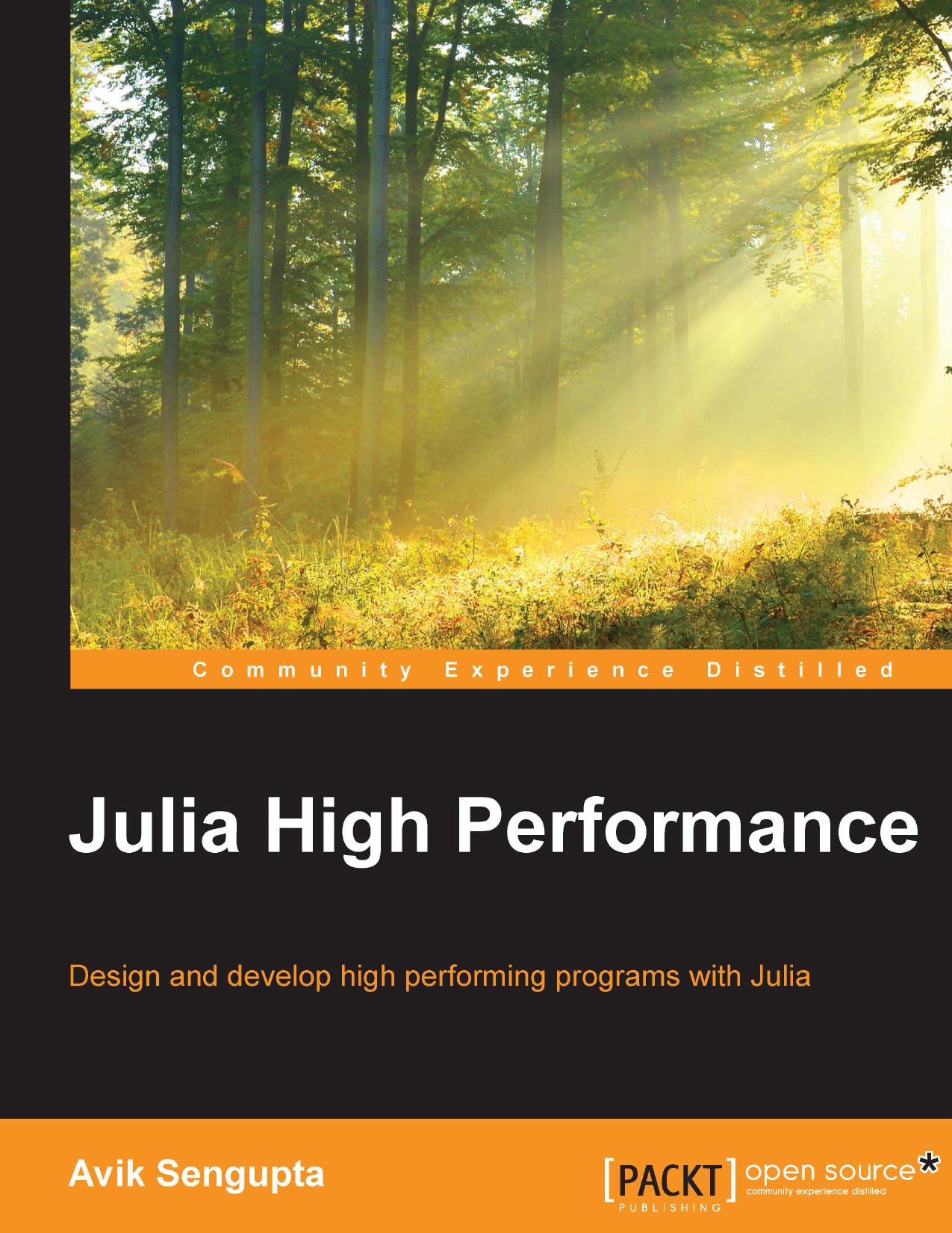Julia High Performance by Avik Sengupta

Author:Avik Sengupta
Language: eng
Format: epub, pdf
Tags: COM051000 - COMPUTERS / Programming / General, COM051010 - COMPUTERS / Programming Languages / General, COM042000 - COMPUTERS / Natural Language Processing
Publisher: Packt Publishing
Published: 2019-06-07T06:34:27+00:00
We can then benchmark these functions with and without forcing subnormal numbers to zero. Take a look at the following:
julia> set_zero_subnormals(false)
true
julia> t=rand(1000);
julia> @btime heatflow($t, 1000)
1.559 ms (1 allocation: 7.94 KiB)
julia> set_zero_subnormals(true)
true
julia> @btime heatflow($t, 1000)
1.062 ms (1 allocation: 7.94 KiB)
We can see a significant increase in speed by forcing subnormal numbers to zero.
Summary
In this chapter, we discussed how Julia uses a machine representation of numbers to achieve a C-like performance for its arithmetic computations. We noted how to work within these design constraints, and considered the edge cases that are introduced.
Working with single numbers, however, is the easy part. Most numerical computations, as we noted throughout this chapter, consist of working on large sets of numbers. In the next chapter, we will take a look at how to work with arrays in a performant manner.
Download
This site does not store any files on its server. We only index and link to content provided by other sites. Please contact the content providers to delete copyright contents if any and email us, we'll remove relevant links or contents immediately.
| Coding Theory | Localization |
| Logic | Object-Oriented Design |
| Performance Optimization | Quality Control |
| Reengineering | Robohelp |
| Software Development | Software Reuse |
| Structured Design | Testing |
| Tools | UML |
Deep Learning with Python by François Chollet(12957)
Hello! Python by Anthony Briggs(10198)
The Mikado Method by Ola Ellnestam Daniel Brolund(10107)
OCA Java SE 8 Programmer I Certification Guide by Mala Gupta(10044)
Dependency Injection in .NET by Mark Seemann(9582)
Algorithms of the Intelligent Web by Haralambos Marmanis;Dmitry Babenko(8589)
Grails in Action by Glen Smith Peter Ledbrook(7942)
Becoming a Dynamics 365 Finance and Supply Chain Solution Architect by Brent Dawson(7910)
Test-Driven iOS Development with Swift 4 by Dominik Hauser(7900)
The Well-Grounded Java Developer by Benjamin J. Evans Martijn Verburg(7843)
Microservices with Go by Alexander Shuiskov(7678)
Practical Design Patterns for Java Developers by Miroslav Wengner(7572)
Test Automation Engineering Handbook by Manikandan Sambamurthy(7508)
Angular Projects - Third Edition by Aristeidis Bampakos(6983)
Secrets of the JavaScript Ninja by John Resig Bear Bibeault(6739)
The Art of Crafting User Stories by The Art of Crafting User Stories(6444)
NetSuite for Consultants - Second Edition by Peter Ries(6388)
Demystifying Cryptography with OpenSSL 3.0 by Alexei Khlebnikov(6184)
Kotlin in Action by Dmitry Jemerov(5369)
